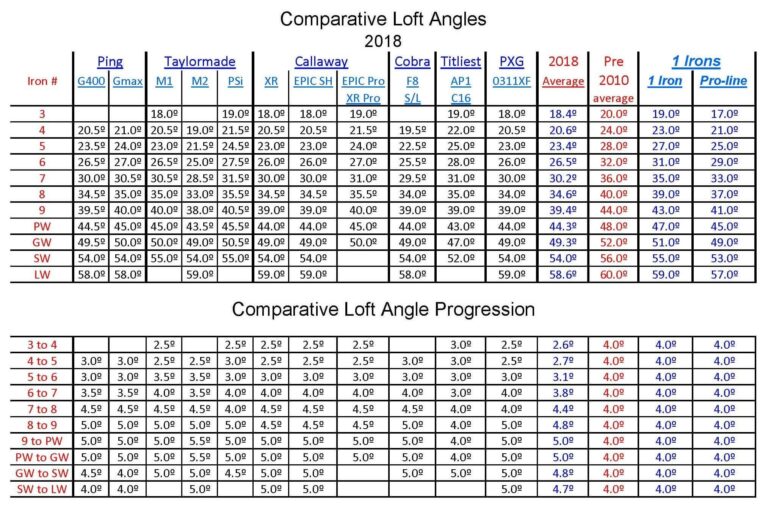Golf course operations involve maintaining the course, managing staff, and ensuring an excellent experience for golfers. Efficient operations enhance course quality and customer satisfaction.
Golf course operations encompass several key aspects. Maintenance of the greens, fairways, and bunkers is crucial. Course superintendents oversee landscaping and irrigation to keep the turf healthy. Staff management is another essential component, involving hiring, training, and scheduling employees. Pro shops and clubhouses require attentive management to meet golfer needs.
Implementing effective marketing strategies attracts new members and retains existing ones. Technology plays a significant role in modern operations, from online booking systems to GPS-equipped golf carts. Overall, smooth golf course operations contribute significantly to the success and reputation of a golf facility.
Contents
- 1 Introduction To Golf Course Operations
- 2 Course Design And Layout
- 3 Staff Management
- 4 Equipment And Technology
- 5 Environmental Sustainability
- 6 Customer Experience
- 7 Financial Management
- 8 Marketing And Promotion
- 9 Seasonal Adjustments
- 10 Future Trends In Golf Course Operations
- 11 Frequently Asked Questions
- 12 Conclusion
Introduction To Golf Course Operations
Golf course operations involve managing and maintaining a golf course. This includes both the physical grounds and the services offered. The goal is to provide an excellent experience for golfers. This requires skilled planning and effective management.
Importance Of Efficiency
Efficiency is critical in golf course operations. It ensures the course runs smoothly. Efficient operations help maintain the course’s quality. This attracts more golfers and boosts revenue.
Efficiency also reduces costs. It saves time and resources. This makes the golf course more profitable. Efficient staff and equipment usage are key to success.
Overview Of Key Components
Several key components make up golf course operations. These include:
- Course Maintenance: Keeping the greens, fairways, and bunkers in top condition.
- Staff Management: Hiring and training skilled workers.
- Customer Service: Ensuring golfers have a great experience.
- Equipment Management: Maintaining tools and machinery.
- Pro Shop Operations: Managing sales of golf gear and apparel.
- Event Management: Organizing tournaments and events.
| Component | Importance |
|---|---|
| Course Maintenance | Ensures the playing area is in excellent condition. |
| Staff Management | Ensures skilled workers are available. |
| Customer Service | Ensures golfers have a great experience. |
| Equipment Management | Ensures tools are in good condition. |
| Pro Shop Operations | Boosts revenue through sales. |
| Event Management | Attracts more golfers. |

Credit: www.tcpalm.com
Course Design And Layout
Golf course design and layout play a crucial role in the overall experience. The layout can affect how enjoyable and challenging the game is. A well-designed course can attract more players and enhance the reputation of the club.
Impact On Playability
The design of a golf course directly impacts its playability. A well-thought-out layout offers a balanced mix of difficulty levels. This ensures that both beginners and seasoned players enjoy their rounds.
Consider the following elements that affect playability:
- Fairway Width: Wider fairways are more forgiving for beginners.
- Hazards: Bunkers and water hazards add challenge and excitement.
- Green Complexity: Undulating greens can test putting skills.
- Course Length: Different tees accommodate various skill levels.
Maintenance Considerations
The layout also impacts maintenance requirements. Efficient design can make maintenance easier and less costly. Maintenance teams consider various factors to keep the course in top condition.
Key maintenance considerations include:
- Access Paths: Easy access for mowers and equipment.
- Drainage Systems: Proper drainage prevents waterlogging and turf damage.
- Vegetation: Selecting low-maintenance plants reduces upkeep.
- Irrigation: Efficient irrigation systems ensure healthy turf.
These factors contribute to the overall sustainability of the course. They also enhance the playing experience for golfers.
| Element | Impact on Playability | Maintenance Considerations |
|---|---|---|
| Fairway Width | Affects ease of play | Wider fairways easier to maintain |
| Hazards | Adds challenge | Requires regular upkeep |
| Green Complexity | Tests putting skills | Frequent mowing and care needed |
| Course Length | Accommodates all skill levels | Longer courses need more resources |
Staff Management
Effective staff management is crucial for smooth golf course operations. Proper roles, responsibilities, and training ensure a pleasant experience for visitors.
Roles And Responsibilities
Each staff member has specific duties to keep the golf course running efficiently. Below is a table outlining key roles and their responsibilities:
| Role | Responsibilities |
|---|---|
| Course Manager | Oversees daily operations and manages staff. |
| Groundskeeper | Maintains the course and ensures it is playable. |
| Pro Shop Staff | Handles sales and provides customer service. |
| Golf Instructor | Teaches golf techniques to players of all levels. |
| Caddies | Assists players with clubs and course navigation. |
Training Programs
Training programs are essential to ensure that all staff members perform their duties effectively. Here are some key training programs:
- Customer Service Training: Teaches staff how to interact with visitors.
- Safety Training: Ensures staff know how to handle emergencies.
- Technical Training: Educates on equipment and maintenance techniques.
- Sales Training: Helps pro shop staff improve sales skills.
- Golf Instruction Techniques: Provides golf instructors with updated teaching methods.

Credit: www.usga.org
Equipment And Technology
Modern golf course operations rely heavily on advanced equipment and technology. These tools streamline maintenance tasks and enhance the overall golfing experience. Let’s delve into the specifics.
Modern Tools
Modern tools make managing golf courses more efficient. Automated mowers keep the greens perfectly trimmed without much human intervention. Drones provide aerial views of the course, helping in planning and maintenance.
- Automated mowers
- Drones
- Irrigation systems
- GPS tracking
Irrigation systems use sensors to water only where needed. This conserves water and ensures the grass stays lush. GPS tracking helps in locating equipment quickly. It also helps in planning the most efficient routes for maintenance tasks.
Maintenance Schedules
Maintaining a golf course requires a well-planned schedule. Daily tasks include mowing greens and checking irrigation systems.
| Task | Frequency |
|---|---|
| Mowing Greens | Daily |
| Checking Irrigation | Daily |
| Raking Bunkers | Weekly |
| Fertilizing | Monthly |
Weekly tasks involve raking bunkers and checking sand levels. Monthly tasks include fertilizing and aerating the soil to ensure healthy turf.
Using technology, these schedules can be automated. This ensures nothing is missed. Software programs can send reminders and keep track of completed tasks.
Environmental Sustainability
Environmental sustainability in golf course operations is crucial. Golf courses need to protect nature while offering great play conditions. This involves smart water use and eco-friendly practices. Below, we explore these key areas.
Water Management
Water management is vital for golf courses. They need lush, green grass but must use water wisely.
There are several strategies for effective water management:
- Install efficient irrigation systems.
- Use drought-resistant grass varieties.
- Harvest and use rainwater.
- Monitor soil moisture with smart sensors.
These steps help in reducing water waste and keeping the turf healthy.
Eco-friendly Practices
Adopting eco-friendly practices is essential. Golf courses can be green and sustainable.
Here are some eco-friendly practices to follow:
- Use organic fertilizers and pesticides.
- Plant native trees and shrubs.
- Recycle waste and use compost.
- Employ solar energy for operations.
These practices help in reducing the ecological footprint.
| Practice | Benefits |
|---|---|
| Efficient Irrigation Systems | Saves water and keeps grass healthy |
| Organic Fertilizers | Improves soil health and reduces chemicals |
| Solar Energy | Reduces carbon footprint |
Customer Experience
The customer experience is crucial for any golf course operation. A memorable experience ensures player satisfaction and loyalty. Let’s delve into how to enhance player satisfaction and gather valuable feedback.
Enhancing Player Satisfaction
Player satisfaction starts with excellent service. Greet players warmly at the entrance. Ensure staff are friendly and approachable. Provide clear signage throughout the course.
Offer quality amenities to enhance the experience. Clean restrooms, well-maintained greens, and comfortable seating areas are essential. High-quality equipment and rental services also improve satisfaction.
| Aspect | Quality |
|---|---|
| Restrooms | Clean and stocked |
| Greens | Well-maintained |
| Seating Areas | Comfortable and shaded |
| Equipment | High-quality and available |
Organize events and tournaments to engage players. Offer rewards and recognition for participation. This builds a sense of community and encourages repeat visits.
Feedback Mechanisms
Gathering feedback is vital for continuous improvement. Use multiple channels to collect feedback. These include:
- Surveys
- Suggestion boxes
- Online reviews
- Social media
Surveys can be distributed via email or at the clubhouse. Ask specific questions about their experience. Offer an incentive for completing the survey.
Suggestion boxes should be placed in visible areas. Encourage players to share their thoughts and ideas. Regularly review and act on the feedback received.
Monitor online reviews on platforms like Google and Yelp. Respond promptly and professionally to all reviews. Address any issues raised by players.
Engage with players on social media. Create posts that invite feedback and suggestions. This allows for real-time interaction and quick resolution of issues.
Financial Management
Managing finances is crucial for any golf course. Proper financial management ensures the course remains profitable and sustainable. This section will cover key aspects of financial management, including budgeting strategies and revenue streams.
Budgeting Strategies
Effective budgeting strategies help control costs and maximize profits. A clear budget plan allows for better decision-making. Below are some essential budgeting tips:
- Track all expenses meticulously.
- Allocate funds for unexpected repairs and maintenance.
- Set aside a portion of revenue for future investments.
Revenue Streams
Identifying and optimizing revenue streams is vital. Here are some common revenue sources for golf courses:
| Revenue Source | Description |
|---|---|
| Green Fees | Charges for playing a round of golf. |
| Membership Fees | Annual or monthly fees for club members. |
| Pro Shop Sales | Sales of golf equipment and apparel. |
| Food and Beverage | Revenue from on-site restaurants and bars. |
Marketing And Promotion
Effective marketing and promotion are crucial for any golf course. These strategies attract new players and retain existing members. A well-planned approach can significantly boost your golf course operations.
Attracting New Players
To attract new players, use various marketing channels. Social media platforms are excellent for reaching a wide audience. Post engaging content such as:
- Photos of the course
- Upcoming events
- Player testimonials
Offer special promotions for first-time players. Discounts and free trials can encourage new visitors. Collaborate with local businesses for cross-promotions. This can increase your reach and attract new players.
Ensure your website is user-friendly. New players should easily find information about:
- Course details
- Membership options
- Booking processes
Retaining Members
Retaining members is as important as attracting new ones. Regular communication is key. Send newsletters with updates about:
- Upcoming events
- Special offers
- Course improvements
Create a sense of community. Organize member-only events and tournaments. This encourages social interaction and loyalty.
Offer loyalty programs. Reward members for their continued support. Points systems or exclusive discounts can be effective.
Listen to member feedback. Regular surveys can provide valuable insights. Address their concerns promptly to maintain satisfaction.
| Marketing Strategy | Purpose |
|---|---|
| Social Media Campaigns | Engage and attract new players |
| Special Promotions | Encourage first-time visits |
| Member Newsletters | Keep members informed and engaged |
| Loyalty Programs | Reward and retain members |
Seasonal Adjustments
Managing a golf course requires adapting to changing seasons. Each season brings unique challenges and opportunities. Proper seasonal adjustments ensure a well-maintained course and satisfied golfers.
Weather Impact
Weather significantly affects golf course operations. Different seasons bring varied weather conditions. Spring often introduces rain, promoting grass growth but requiring diligent water management. Summer’s heat stresses turf, demanding increased irrigation.
Fall’s cooler temperatures slow grass growth, easing mowing schedules. Winter’s cold can freeze the ground, making maintenance difficult. Understanding weather patterns helps in planning efficient operations.
Off-season Preparations
Preparing for the off-season is crucial. It ensures the course remains in good shape. Start with a comprehensive maintenance checklist:
- Aeration: Relieves soil compaction and promotes root growth.
- Fertilization: Provides essential nutrients for turf health.
- Pest Control: Prevents infestations during dormant periods.
- Equipment Maintenance: Ensures tools are ready for the next season.
Conduct an inventory check. Ensure all supplies are stocked. Order necessary items early to avoid delays. Focus on staff training during this period. Educate them about new techniques and safety protocols.
| Task | Description | Timeframe |
|---|---|---|
| Aeration | Relieves soil compaction | Late Fall |
| Fertilization | Provides essential nutrients | Early Spring |
| Pest Control | Prevents infestations | Mid-Winter |
| Equipment Maintenance | Ensures readiness | Throughout Off-Season |
Properly executed off-season preparations lead to a thriving golf course. It ensures a great experience for golfers throughout the year.
Future Trends In Golf Course Operations
The future of golf course operations is bright. Emerging trends promise to revolutionize the industry. Key focus areas include technological advancements and shifting player demographics.
Technological Advancements
Technology is changing the way golf courses operate. Automated maintenance systems are becoming the norm. Robots now handle mowing and watering.
Smart irrigation systems save water. They use sensors to detect soil moisture. This helps keep the grass healthy while conserving resources.
GPS technology assists in course management. It helps track player movements and provides real-time data. This data helps in better planning and resource allocation.
Golf simulators are gaining popularity. They offer a realistic golfing experience indoors. Players can practice their swings without going to the course.
Shifting Player Demographics
The demographics of golf players are changing. Younger people are taking up golf. This shift demands new strategies in course operations.
Millennials prefer tech-driven experiences. They enjoy using apps for booking and tracking their game. Golf courses are adapting to these preferences.
Inclusivity is another important trend. Courses are becoming more welcoming to women and minorities. This shift is broadening the player base.
Family-friendly facilities are on the rise. Courses now offer amenities for all age groups. This attracts more families to the sport.
| Trend | Impact |
|---|---|
| Technological Advancements | Improved efficiency and experience |
| Shifting Player Demographics | Broader and younger player base |
- Embrace automation and smart systems.
- Cater to younger, tech-savvy players.
- Promote inclusivity and family-friendly amenities.

Credit: www.brightview.com
Frequently Asked Questions
What Are Golf Operations?
Golf operations involve managing golf courses, including tee times, staffing, course maintenance, and member services. They ensure smooth daily functioning.
How To Operate A Golf Course?
To operate a golf course, manage staff, maintain greens, schedule tee times, offer amenities, and ensure customer satisfaction.
What Are The Tasks On A Golf Course?
Tasks on a golf course include mowing the grass, maintaining bunkers, watering greens, repairing divots, and managing tee times. Staff also handle equipment rentals, enforce rules, and provide customer service. Regular maintenance ensures optimal playing conditions.
How To Be A Good Golf Course Manager?
To be a good golf course manager, focus on customer service, maintain the course, manage staff effectively, ensure safety, and promote events.
Conclusion
Mastering golf course operations ensures a seamless experience for players and staff. Efficient management boosts course quality and customer satisfaction. By focusing on maintenance, staffing, and technology, golf courses can thrive. Keep evolving and adapting to new trends for continued success in the industry.





